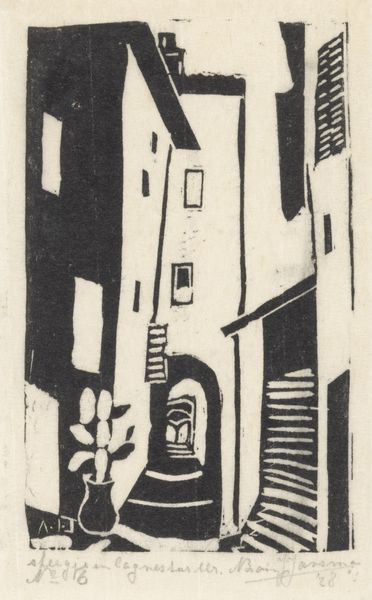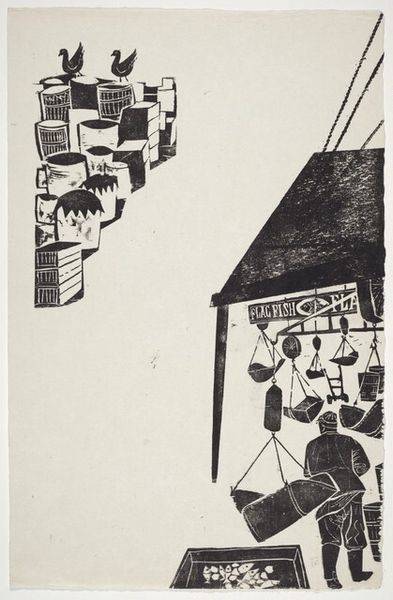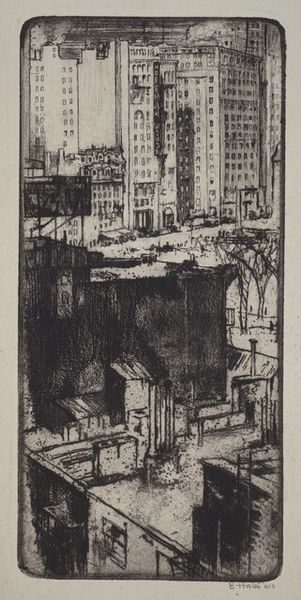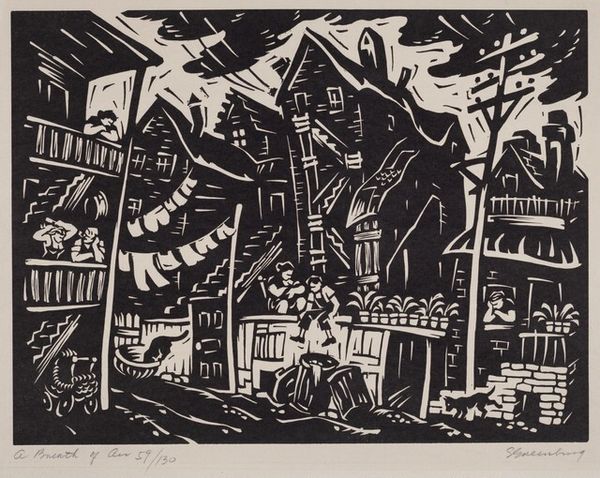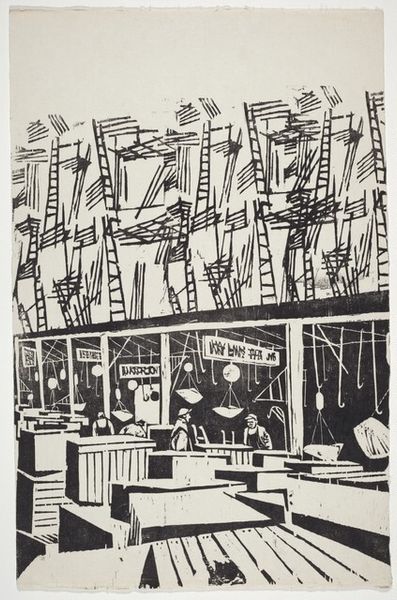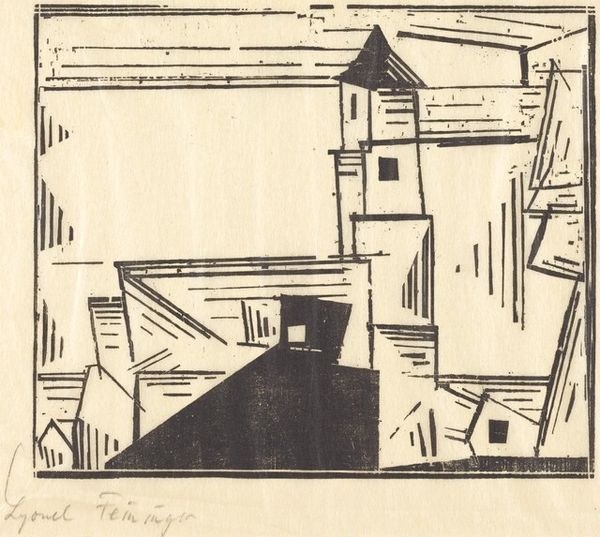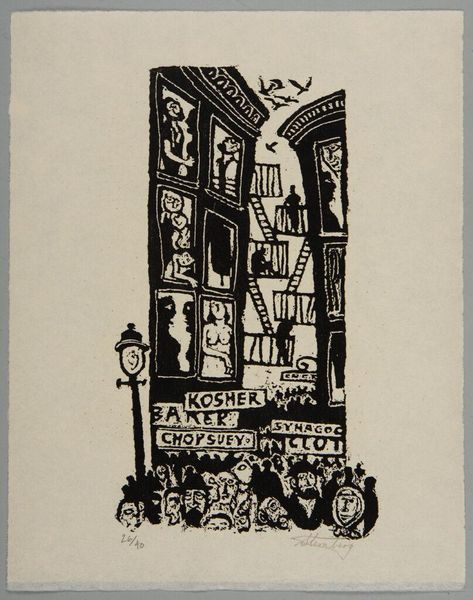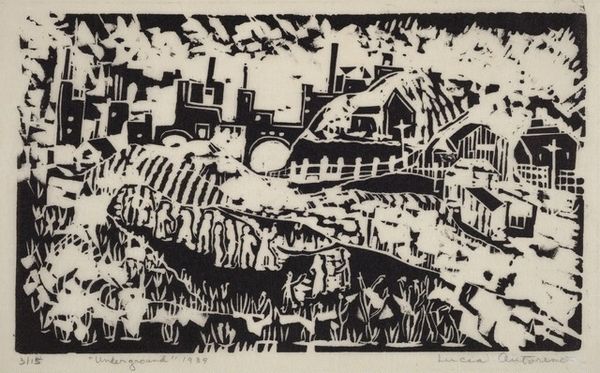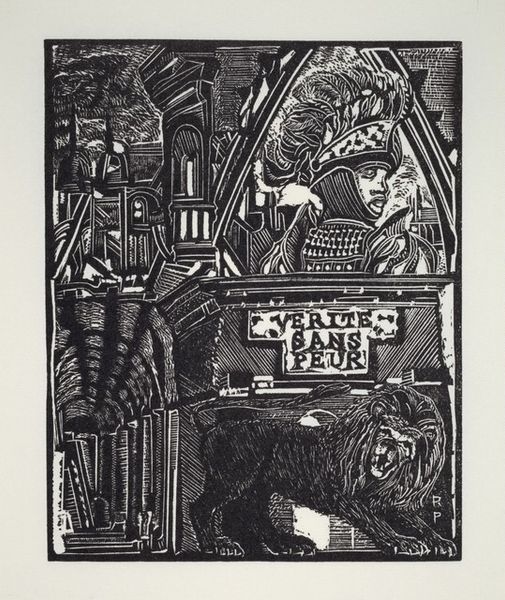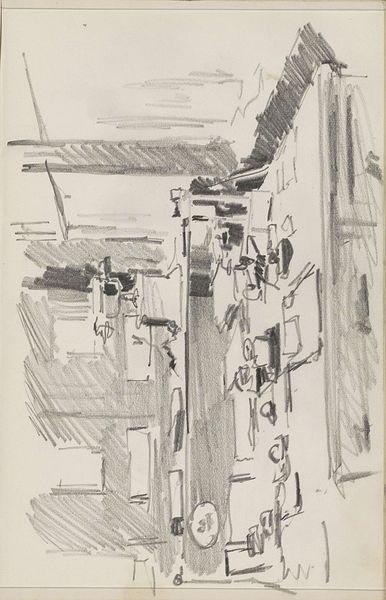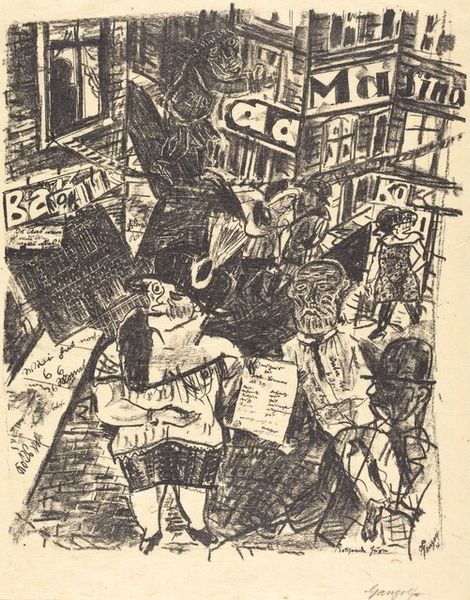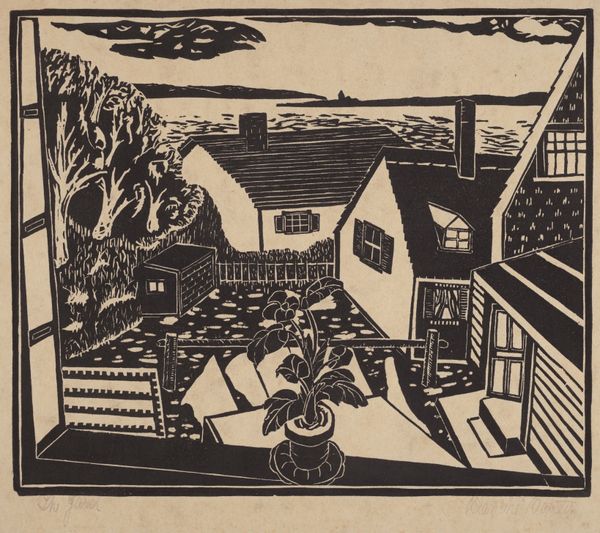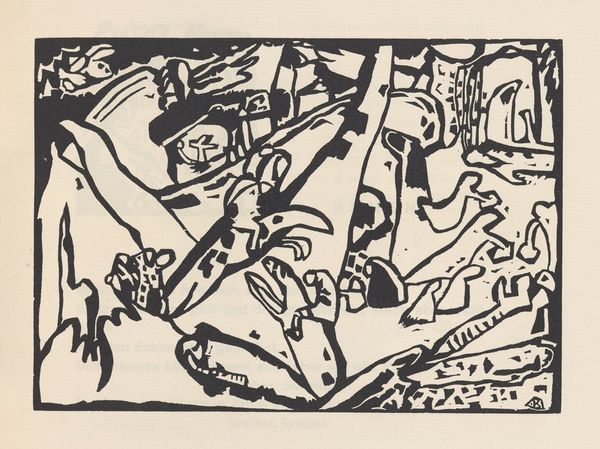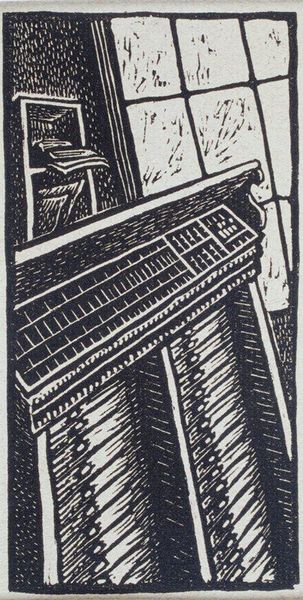
print, woodcut
# print
#
landscape
#
geometric
#
woodcut
#
cityscape
#
genre-painting
#
monochrome
Dimensions: 17 5/8 × 11 5/8 in. (44.77 × 29.53 cm) (image)18 9/16 × 12 11/16 in. (47.15 × 32.23 cm) (sheet)
Copyright: No Copyright - United States
Curator: This woodcut, titled "Back Stairs," was created in 1915 by Mildred McMillen and is now housed in the Minneapolis Institute of Art. What strikes you first about this monochrome composition? Editor: Immediately, it's the striking contrast—the stark blacks and whites that render the scene with a peculiar tension, a certain sense of disquiet. The geometric rigor with which McMillen constructs the architectural forms only reinforces this mood. Curator: Indeed. McMillen's strategic use of line generates depth and form. Notice how the diagonal lines of the stairs create an illusion of receding space, contrasting with the vertical emphasis of the looming chimney. The flat, graphic style intensifies the structural elements. Editor: The chimney feels almost like a secular obelisk—a phallic assertion looming over the more domestic sphere below. And the woman, bent low, washing – she is dwarfed by both this symbol of modernity, and by the geometric architecture, creating an interesting juxtaposition. Curator: The very placement of the human figure, subservient to the geometry, raises questions about social hierarchies within a rapidly modernizing society. Her posture is telling, hinting at labor, toil, and a lack of agency in the face of the burgeoning industrial age represented by the looming factory. Editor: It's not merely physical labor. Washing carries such symbolic weight—cleansing, atonement. This small scene plays against the cold, hard geometry and implies more about the artist's world and values. It suggests both the drudgery of domestic work, but also the power to overcome it, made visible. Curator: Considering McMillen created "Back Stairs" during a period of immense social and artistic change, such readings gain resonance. I find myself returning to the way in which this black-and-white print manages to evoke a mood, seemingly simultaneously detached, objective, and yet full of latent narrative power. Editor: Ultimately, the emotional impact is the key; that clash of starkness and subtle emotion suggests that while times are changing, some fundamentals of the human experience do endure. It makes this relatively simple, graphic piece intensely rewarding.
Comments
minneapolisinstituteofart almost 2 years ago
⋮
In the art colony nestled in the small fishing village of Provincetown, Mass., Mildred McMillen must have seemed like the neighbor who keeps watching her black-and-white television set long after everyone else on the block has switched to color TV. While her artist friends were causing a stir with their color woodcuts, McMillen remained steadfastly monochromatic. And instead of depicting the local characters, flowers, and harbor scenes like most artists in town, she wandered Cape Cod’s back alleys in search of interesting patterns, like a house painter’s scaffolding or a grouping of rooftops. In Backstairs (1915), her wood-carving skill is apparent in these complicated stairs. The scene is early morning, when shadows are long and the laundry has plenty of time to dry. McMillen’s starkly simplified elements give this woodcut a graphic power typical of European prints, which she undoubtedly saw while studying printmaking in Paris. Here she draws our attention to the solitary figure bent over her labors, her curved, solid form contrasting with the zigzagging stairs looming above her. In McMillen’s deft handling of the woman, the white of the paper becomes a second “color.”
Join the conversation
Join millions of artists and users on Artera today and experience the ultimate creative platform.
